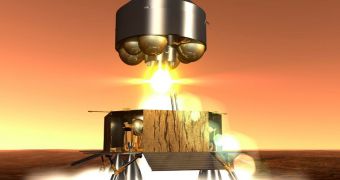At this point, space agencies estimate that sending a robotic sample-return mission to the surface of Mars would come with a price take of $5 to 10 billion. However, an electric propulsion system would drastically diminish these cost projections, perhaps bringing total funding levels within acceptable limits.
The two main requirements of an effective propulsion system are powerful electric thrusters and efficient solar panels. Both of these classes of instruments are currently under research, but no efficient solution in this direction is available today.
A potential Mars sample-return (MSR) mission would require such efficient thrusters and power sources in order to carry out the long journey to the Red Planet and backwards. Currently, it takes between 18 and 24 months to conduct a round-trip flight to Mars, depending on the objectives.
In addition, the spacecraft will not have to carry massive amounts of propellants, needed to ensure adequate fuel reserves. Another benefit would be the reduced weight, which could enable either a larger satellite and lander, or the use of a smaller rocket, Space reports.
Interestingly, German Aerospace Center (DLR) physicist Wolfgang Seboldt believes that currently-available technologies would enable us to conduct such a MSR mission between 2020 and 2030/40.
The expert says that a MSR spacecraft would launch in a conventional manner. However, once it reaches orbit, it would switch to solar propulsion systems, relinquishing the use of chemical fuels.
The main propellant could be xenon gas, a chemical that can be turned into a steady stream of ions, which are electrically-charged atoms. The outflow of gas is small, but constant, and generates sufficient thrust to move the spacecraft forward at various speeds.
Over time, solar-powered ion thrusters reach speeds exceeding those of conventional motors. Since the electricity supply would be limitless – unless the Sun decides to burn out in the meantime – the speed could increase constantly.
The DLR investigator believes that the “propellant mass saving over-compensates the mass increase from the large solar arrays.” This means that a potential MSR spacecraft could fly to Mars and back faster than a conventional satellite, even if it carries extra-large solar panels.
“Possibly the International Space Station may be a good place for testing newly developed thrusters under extreme space conditions. Also, the power supply with large deployable, lightweight and efficient solar arrays must be studied,” Seboldt concludes.

 14 DAY TRIAL //
14 DAY TRIAL //